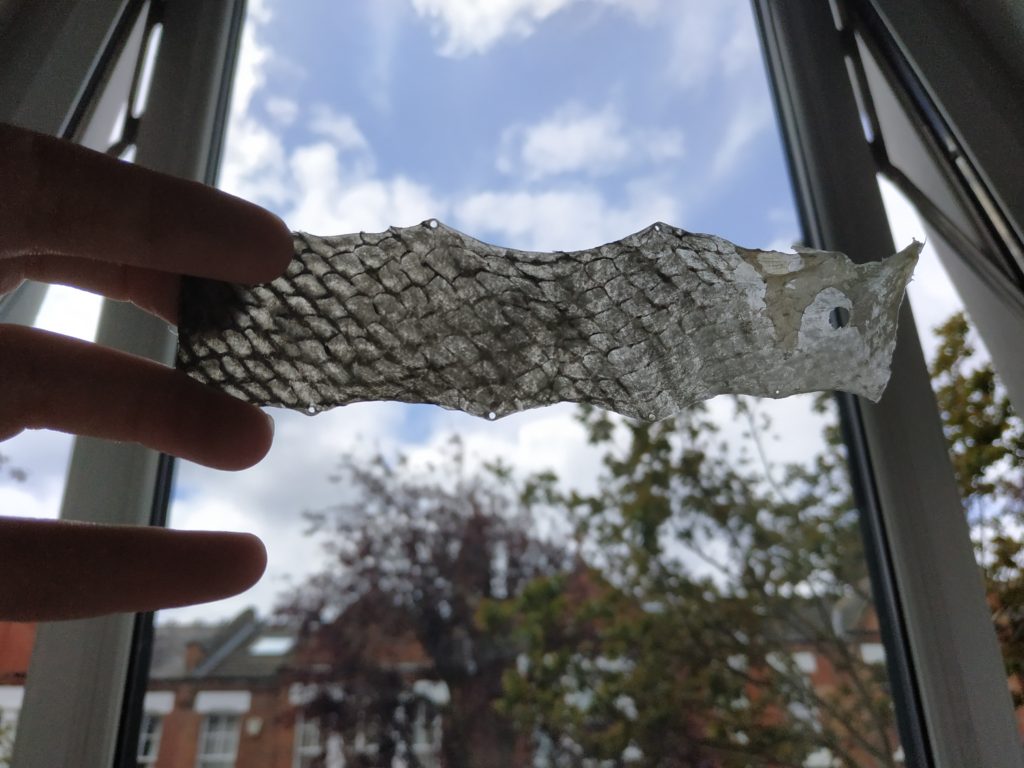Making Fish Leather
As far as hobbies go, most of us tend to go for the usual painting or exercising. Claire, an art conservator, chose to learn how to make fish leather during lockdown. Fascinating, isn’t it? Read all about it below.
_____
During this lockdown, continuous professional development has played a big role. As an art conservator, I’ve always been curious about arts in general and crafts in particular. Art conservators tend to be crafty people. So, when I came across a video on YouTube about making parchment from fish skin by Peter Verheyen, I just couldn’t resist.
Why?
After watching videos and reading articles from Peter’s website and other sources for a whole evening, I thought it’d be really interesting to give it a go. It looked fairly simple, as I only needed a few ingredients I could find easily, and it could make me to stay away from my computer for a while.
I have to admit that although it seemed cool, it also looked slightly gross. But, that is always a great combination!
Another advantage is helping me to maintain manual dexterity, which is an essential quality an art conservator should possess and hone.
How I did it
The only fish skin I had in the fridge was either salmon or mackerel. Apparently, the smelliest fish to do this is mackerel, because it’s very oily and that’s where the smell typically comes from.
So, I started to skin a very slipery salmon fillet.

After that, I massaged the skin with a lot of washing up liquid for a few minutes. The best soap to use for this is the most basic one without any scent.
I then placed the skin in a small container filled with more Fairy liquid and cold water. Using cold water is important, as a high temperature can ruin the skin. I stored it in the fridge for two days, changing the soapy water twice a day and massaging the skin further.
After that, the scales were mostly gone. I only needed to scrap the skin carefully with a butter knife to get rid of the little bits of flesh that were still clinging to it. I left it again in the fridge for two more days, changing the water like previously. On the last day, I didn’t put soap on and I rinsed it very well under cold water.

Then, the stretching process begins. I used a bit of cardboard piece, covered with clinging film to keep it as dry as possible, since I didn’t have a plastic piece at hand, and little pins. It took around half a day.

Et voilà! Very resistant fish leather or fish skin parchment.




Comments
Making Fish Leather — No Comments
HTML tags allowed in your comment: <a href="" title=""> <abbr title=""> <acronym title=""> <b> <blockquote cite=""> <cite> <code> <del datetime=""> <em> <i> <q cite=""> <s> <strike> <strong>